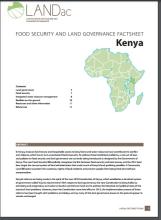Land Library Search
Through our robust search engine, you can search for any item of the over 73,000 highly curated resources in the Land Library.
If you would like to find an overview of what is possible, feel free to peruse the Search Guide.
/ library resources
Showing items 1 through 9 of 40.This article explains how the family productive strategies of farmer settlers and their perceptions of the forest influence the rate of deforestation.
Forests at the tropical Valley of the Apurimac and Ene rivers (VRAE), the second coca-growing region of Peru, are public common resources and nevertheless privately managed mainly by coca farmers, without effective State control of such use.
THE FOREST CONSERVATION AND MANAGEMENT ACT, 2016 No. 34 of 2016
Date of Assent: 31st August, 2016
Date of Commencement: By Notice
Las exigencias en la industria forestal están enfocadas a alcanzar estándares de productividad y un desempeño socialmente responsable con las comunidades, trabajadores y empresas contratistas.
Por sus condiciones biofísicas, los bosques tropicales poseen gran capacidad para ofrecer servicios ecosistémicos.
In Kenya, insecure land tenure and inequitable access to land, forest and water resources have contributed to conflict and violence, which has in turn exacerbated food insecurity.
This book exposes the key land use and environmental problems facing Kenya today due to lack of an appropriate national land use policy. The publication details how the air is increasingly being polluted, the water systems are diminishing in quantity and deteriorating in quality.
El estudio está orientado a evaluar los problemas de la deforestación, mediante la aplicación del Sistema de Información Geográfica (SIG), que viene impactando en el medio ambiente, con el propósito de mostrar las áreas críticas para un mejor ordenamiento espacial y manejo de los recursos; en tal
La deforestación en Sudamérica afecta principalmente a tres ecosistemas: El Cerrado en Brasil, la selva de Chiquitanos en Bolivia y el Gran Chaco en Bolivia, Paraguay y Argentina, siendo en estos dos últimos países en donde ocurren las mayores transformaciones del paisaje para la producción de co




